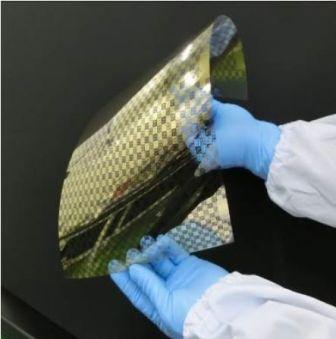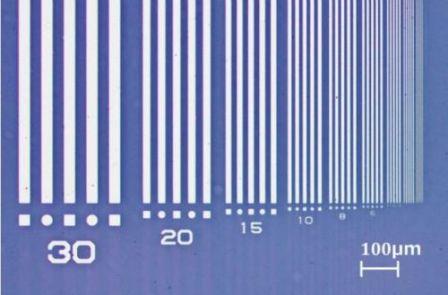TOKYO -- Tanaka Holdings announced today the successful use of its surface treatment chemicals (photosensitive primer used with a colloid catalyst) to create a new direct patterning plating technology.
The technology reportedly does not require a vacuum environment or photoresist, and can directly form low-resistance fine wires on a variety of materials using a low-temperature process that can be performed at or below 100C.
The new technology is a plating technique whereby a photosensitive primer is applied to various substrates such as PET film or glass and exposed to light; after the substrate is immersed in a colloid catalyst solution that includes a gold nanoparticle catalyst. The catalyst is immersed in a electroless plating solution with whatever metal that has been selected for the specific application to form fine electronic circuitry patterns made of various metals with a wire width of 5 microns. Recently, metallic inks have been a focus of attention as a next-generation metal wire formation technology, but this new technology is able to create low-resistance wires using a lower temperature process compared to the wire formation process used for existing metallic inks. In addition, a new method of automatic adsorption of the gold nanoparticle catalyst by the photosensitive primer makes it possible to directly form the wires without using a photoresist. The new technology forms wires using a plating method that does not require vacuum equipment, facilitating the expansion to large batch processing, which will make it possible to form high-performance metallic wires on various substrates and enable mass production. Wires produced with the technology showed much lower volume resistivity (Au: 3.3 uohm-cm, Cu: 2.3 uohm-cm).
As a result of the characteristics and benefits of this technology, it is expected to open new areas of next generation electronics processes that could not be achieved with existing metal wire forming technologies.

Au wires formed on PET film

Wires ranging from 30 um to 5 um in width formed using the new technology
When developing the new technology, Electroplating Engineers of Japan independently developed a photosensitive primer and a colloid catalyst as new surface treatment chemicals. The photosensitive primer is an application-type resin solution based on organic solvents and is used to supplement the gold nanoparticle catalyst on the substrate. By exposing the photosensitive primer to ultraviolet light, the ability to supplement the gold nanoparticles are eliminated in areas other than where wires are to be formed. The colloid catalyst is a water solution that includes a gold nanoparticle catalyst and is automatically absorbed onto the priming paint surface. The gold nanoparticle catalyst has high catalytic activity in various types of electroless plating solutions, and as a result, a precipitation reaction occurs in the metal from adsorption in the electroless plating solution.















